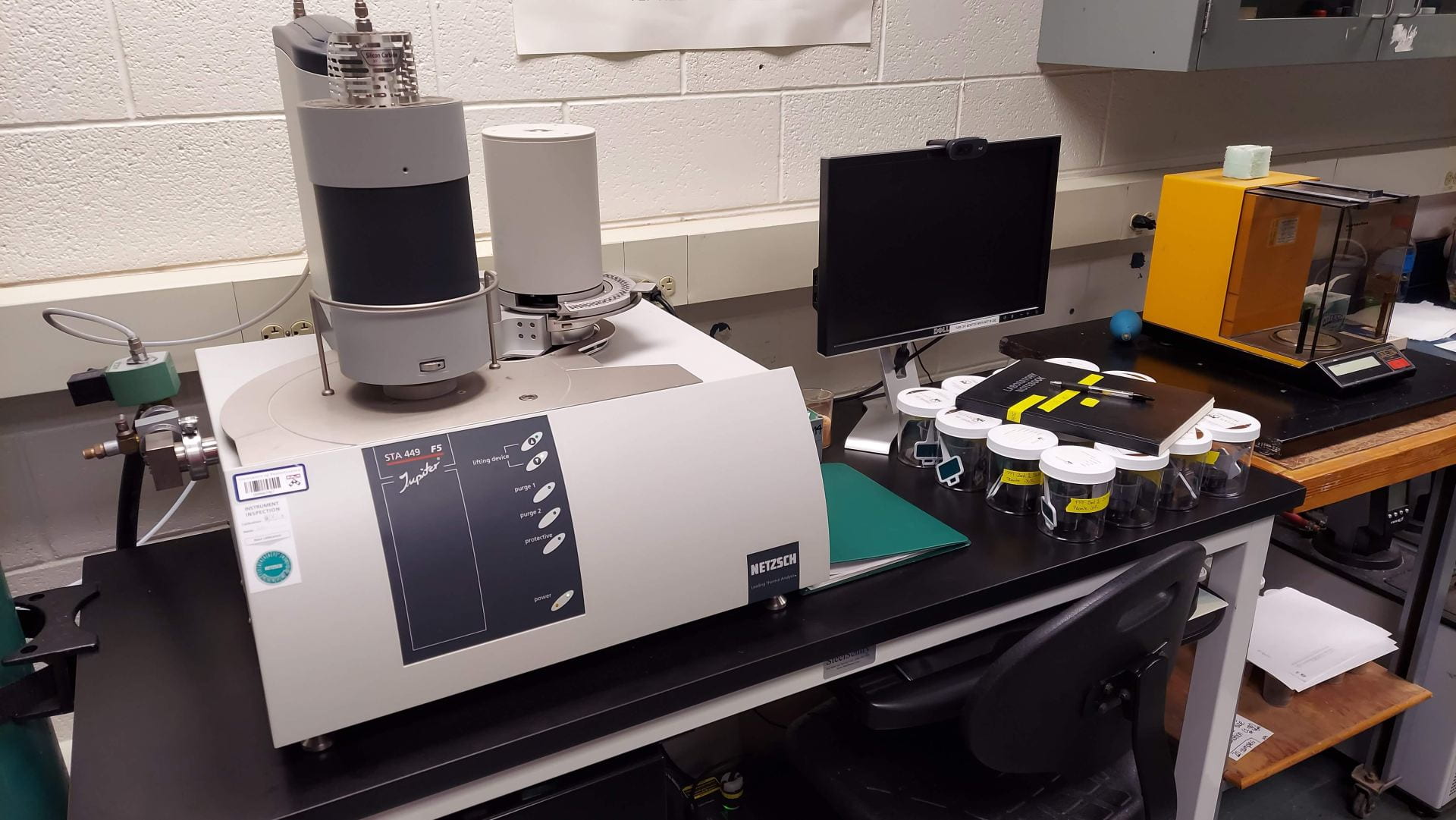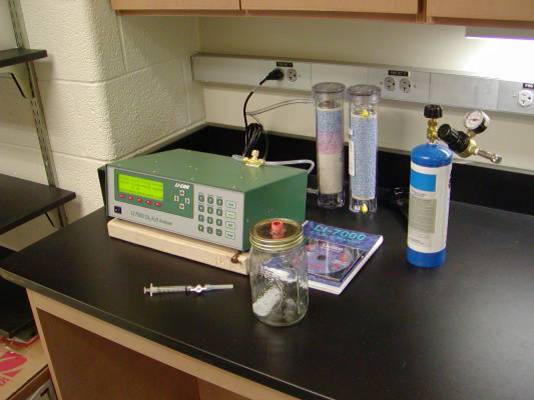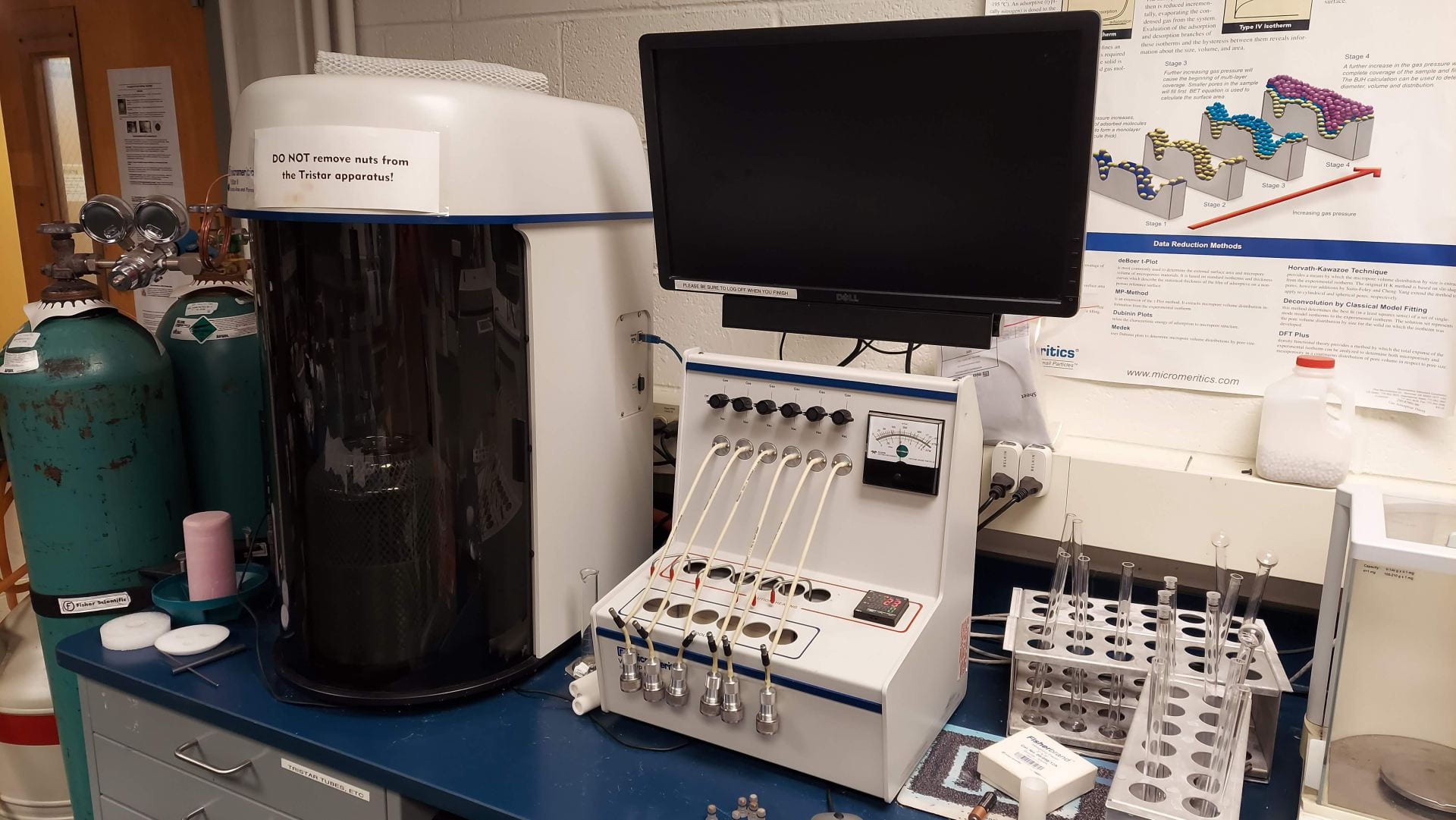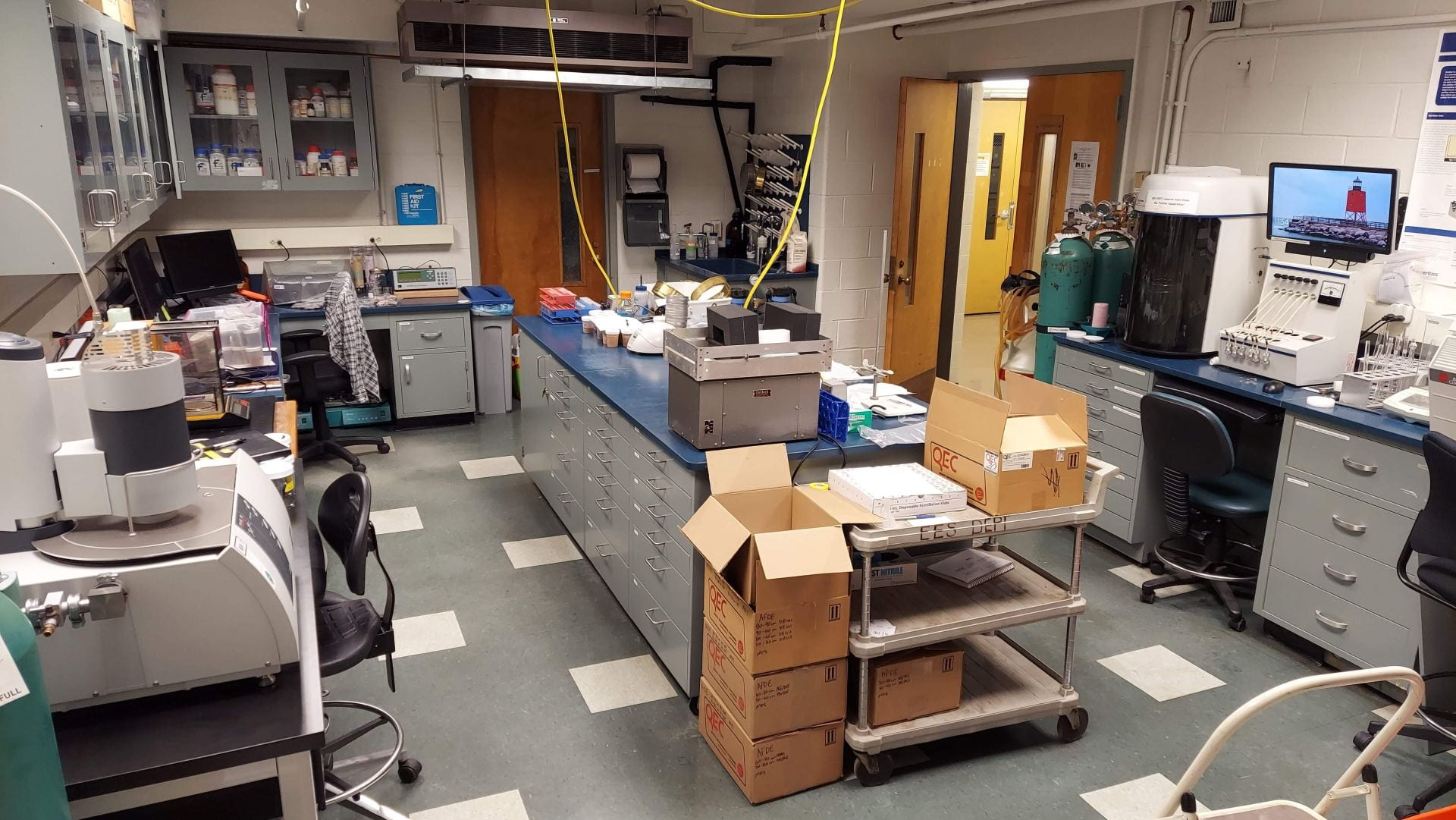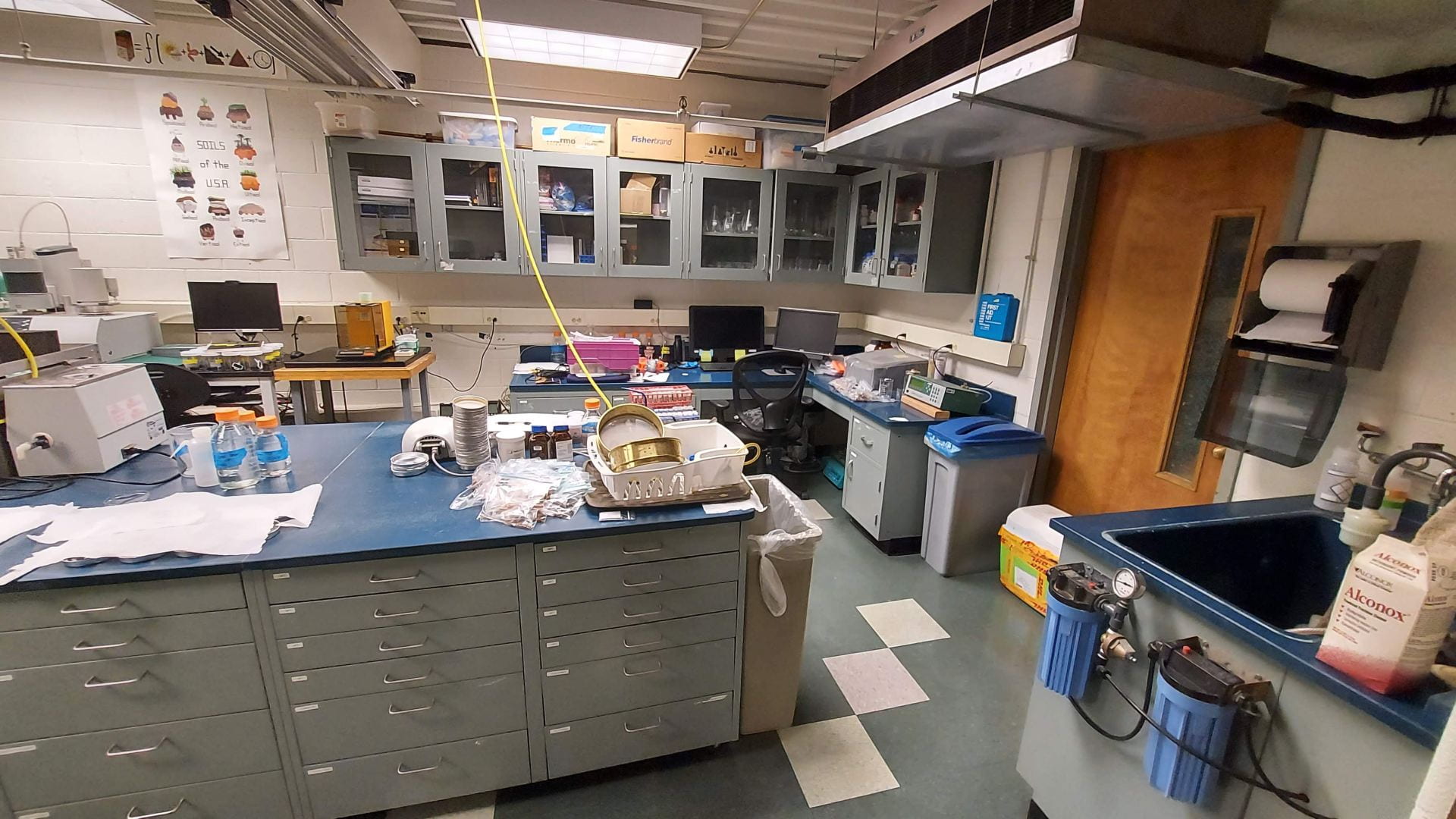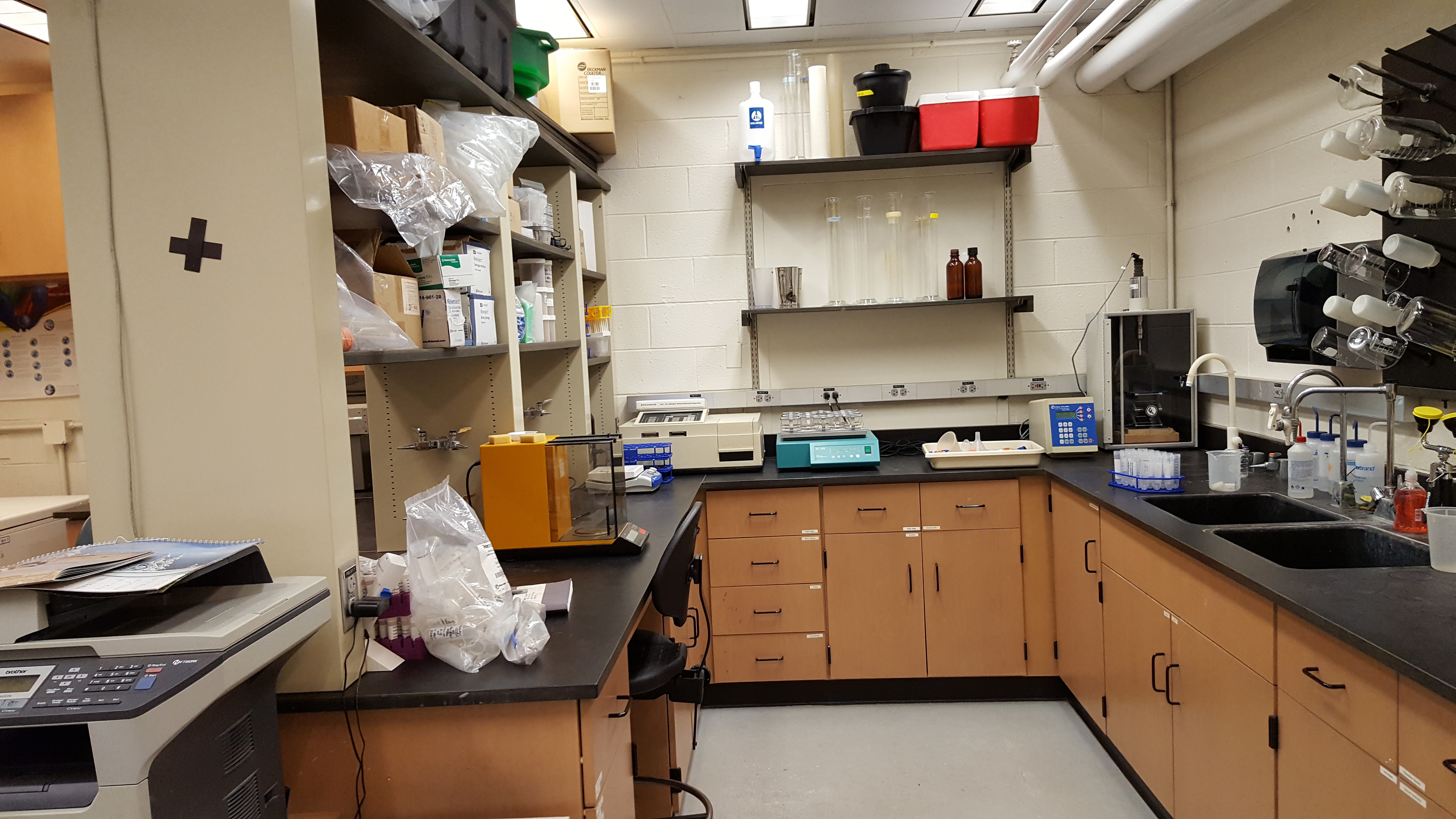Plante Laboratory and Analytical Facilities
Our laboratory facilities provide us the means to physically, chemically and biologically characterize soils from a wide range of ecosystems. We are particularly interested in characterizing the organic matter in these soils to assess its quantity, quality and dynamics. As part of a larger departmental reallocate of space in 2021-2022, our facilities were relocated to 054 Hayden Hall. This smaller space unites some of medium-sized instrumentation and proves more efficient space for our activities.
All materials change their physical properties and their chemical characteristics as a function of temperature. Our simultaneous thermal analyzer (i.e., thermogravimetry and differential scanning calorimetry) provide the capability of measuring mass changes, decomposition behavior, thermal stability, oxidation behavior, etc. of various organic and mineral materials by subjecting samples to temperatures up to 1200°C. The lab houses a Netzsch STA449 F5 Jupiter with an automatic sample carrier with a capacity of 18 samples. The instrument is coupled to a LICOR LI-840a infrared gas analyzer (IRGA) for measuring CO2 and H20 in the evolved gas during ramped combustion. Our primary interest is the thermal stability of organic matter in soil and sediment samples as as a proxy for biogeochemical stability (ie, resistance to microbial decomposition in the environment) and as means of describing of quality continuum of soil organic matter. We are also able to distinguish soil organic matter (neogenic carbon) from pyrogenic carbon (char), geogenic carbon (coal) and inorganic carbon (carbonates).
A LICOR LI-7000 infra-red gas analyzer (IRGA) provides the capability for high-precision measurements of CO2 concentrations in gas samples from ambient levels up to 50,000 ppm (depending on injection volume). A refrigerator-sized incubator used for laboratory soil incubations at constant-temperature. This capability is used to quantify soil respiration during laboratory incubation experiments as a measure of soil organic matter decomposition by the soil microbial population and its enzymes. An EGM-4 and SRC-1 instrument from PP Systems also provides the same capability for CO2 efflux measurements in the field.
Our laboratory also houses instrumentation for specific surface area (SSA) and porosimetry analyses using a Micromeritics TriStar II Plus coupled with a vacuum degasser. We perform specific surface area analyses on soil samples before and after organic matter removal by NaOCl oxidation (bleaching). Combining mineral (post-bleaching) SSA analyses with quantification of organic C concentration in untreated samples allows us to determine the soil “C loading” (mg C per square meter). Soil C loading is a powerful means of assessing the degree to which soil organic matter is associated with mineral surfaces.
Other Analytical Facilities
In addition to what is housed in our lab, shared departmental resources provide the capacity for a range of traditional soil preparation equipment such as sieves, balances, shakers, grinders, soil and plant drying ovens, muffle furnaces, and USDA certified storage space for quarantined soil samples. Departmental facilities also house a range of instrumentation, including: laser diffractometry for particle size analysis, total C and N elemental analyzers (Costech Instruments Elemental Combustion System), mineralogical analysis by x-ray diffraction (XRD), elemental analysis by inductively coupled plasma analysis (ICP-OES and ICP-MS), ion chromatrography (IC) and advanced flame and graphite furnace atomic adsorption spectroscopy (AA) and portable and benchtop x-ray fluorescence (XRF) units, and dissolved organic carbon quantification and characterization by UV-Vis and EEMS.
